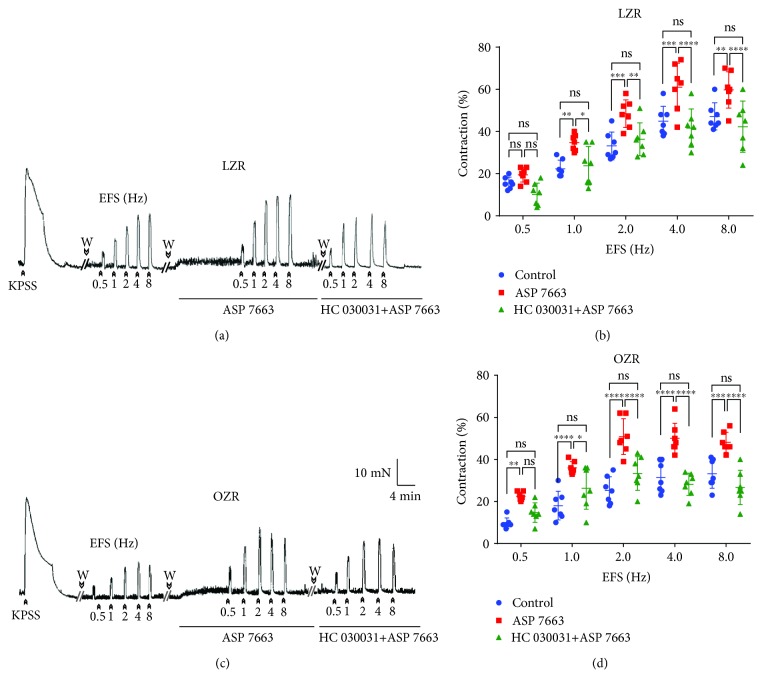Figure 3.
Increased TRPA1 activation on nerve-mediated contraction in the OZR bladder. Isometric force recordings showing the contractions evoked by potassium-rich (124 mM) physiological saline solution (KPSS) and electrical field stimulation (EFS, 1 ms in duration, 0.5 to 8 Hz, and 20-second trains), on the basal tone, of the lean Zucker rat (LZR) (a) and obese Zucker rat (OZR) (c) detrusor strips, treated with propranolol (10 μM) and NG-nitro-L-arginine (100 μM). Vertical bar shows tension in mN and horizontal bar time in min. W: wash. Frequency-response contraction curve to EFS in the detrusor from the LZR (open symbols) (b) and OZR (closed symbols) (d) in the absence (control, circles) or presence of ASP 7663 (10 μM) (triangles), selective TRPA1 agonist, and ASP 7663 plus the TRPA1 antagonist, HC 030031 (60 μM) (squares). Results are shown as mean ± SD percent of KPSS-induced contraction in 7 preparations from 7 rats. LZR at 1 Hz, ∗∗P = 0.007; 2 Hz, ∗∗∗P = 0.0007; 4 Hz, ∗∗∗P = 0.0003; 8 Hz, ∗∗P = 0.006; OZR at 1, 2, and 4 Hz, ∗∗∗∗P < 0.0001; 8 Hz, ∗∗∗P = 0.0001; ASP 7663 vs. control, n = 7. LZR at 1 Hz, ∗P = 0.002; 2 Hz, ∗∗P = 0.008; 4 Hz, ∗∗∗∗P = 0.0001; 8 Hz, ∗∗∗∗P = 0.0001; OZR at 1 Hz, ∗P = 0.019; 2, 4, and 8 Hz, ∗∗∗∗P = 0.0001; ASP 7663 vs. ASP 7663+HC 030031, n = 7; ASP 7663+HC 03003 vs. the control (ANOVA followed by the Bonferroni method).

